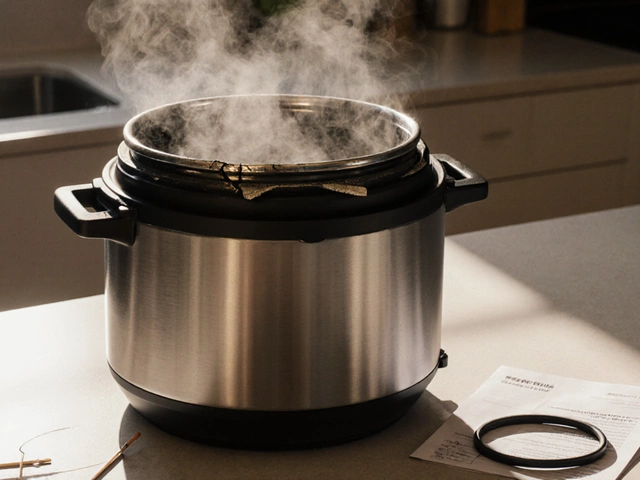I was brushing my teeth when the silence hit me: the bedroom fan, that faithful guardian against the heat, was dead quiet. No buzz. No breeze. For families, pets, and anyone who knows the pain of a sweltering night, a fan that quits out of nowhere is a full-blown emergency. Before you dig out the receipt or scan Amazon for a new one, hang on a sec—there’s a good chance you can fix it yourself. The fix might be as simple as flicking a switch or as tricky as opening up the motor housing, but it’s usually doable. You don’t need a workshop full of gadgets. Just a bit of curiosity, a screwdriver, some patience, and the will to dodge the heat.
First Steps: What to Check When Your Fan Stops Working
Let’s kick things off with the most obvious fixes—the kind even my son Finn could suggest. Check if the fan is plugged in. Seriously, about a quarter of dead-appliance calls are resolved by reconnecting an unplugged cord (cats love unplugging things, as Luna has proven more than once). Next, see if the outlet itself is working. Unplug the fan and try charging your phone. If your phone doesn’t juice up, the outlet’s the problem, not the fan. Try flipping breakers or checking fuses—sometimes the answer is hiding in plain sight.
If power isn’t the issue, examine the fan’s cord for visible damage. Chewed wires from pets or rough handling cause internal breaks that stop electricity from reaching the motor. If you spot obvious damage, don’t use the fan—replace the cord, or get a new fan if you’re no electrician. Moving along, check the fan’s settings. Some models have safety switches, tilt sensors, or even hidden reset buttons. I once spent an hour trying to fix a fan that had a little reset button poking out near the base—one press and, boom, it whirred back to life.
Next, test the fan’s controls. If it has a remote, the batteries might be dead. If it’s a twist-knob or slider, wiggle it a little while listening for a click or resistance. Back in 2023, a friend’s office fan just needed a good cleaning behind the speed switch. Dirt and pet hair can gather inside, insulating contacts so the switch doesn’t connect properly. Blasting the area with compressed air or gently prying up the switch cover can sometimes restore the connection. Easy fixes first: you might solve the problem faster than you’d think.
Dust: the invisible killer. Take off the fan cage and give the blades a good look. When a fan builds up too much dust, its blade balance gets thrown off, which in turn strains the motor. I opened up our living room fan and was greeted by a fur-and-dust abomination—thanks, Luna and Charlie. If the blades are hard to turn by hand, or if you hear grinding or resistance, that caked-on debris could be the culprit. Wipe off the blades, the hub, and anything accessible. Sometimes, a good deep cleaning is all your fan needs to restart.

Digging Deeper: Motor Issues and Internal Faults
If the simple stuff doesn’t fix your fan, it’s time to look inside. Unplug the fan and move to a clear surface—you don’t want screws rolling under the fridge. Most fans come apart easily: just pop off the protective grill, then unscrew the housing. Remember how things fit together, or snap a photo for reference. Inside, you’ll find the motor, wiring, and sometimes a capacitor (a tiny cylinder that helps start the motor).
If your fan’s motor fails to spin (even after you give the blades a gentle push), the problem might be with the bearings, brushes, or that little capacitor. Brushless fans are rare at home—most use motors with carbon brushes, and those wear down with time. Look for small black blocks that ride on the motor shaft. If you see lots of black dust, or the brushes look uneven, those might need a replacement. These parts are super cheap online if you know the model number, and swapping them is about as hard as changing batteries, just fiddlier.
Now the capacitor—a failed capacitor can stop your fan’s motor from starting, even if everything else is in working order. If you hear a feeble buzzing or clicking sound when you try to turn your fan on, or if the blade only starts spinning when you give it a push, the capacitor’s probably bad. They’re usually fastened near the motor, with two or three wires connected. Remember to discharge it first (capacitors store electrical charge, and you don’t want to get zapped—it stings). Swap it out for a new one of the same rating. A working capacitor costs less than a pizza and can bring plenty of old fans back from the dead.
Wiring issues inside the fan are trickier. Look for any burnt sections, melted insulation, or loose connections. If you have a multimeter, you can test continuity along the cord and through the motor leads. If not, just look for obvious problems—discolored wires, melted plastic, or loose crimps are a dead giveaway. Twist-ons and cheap fans sometimes have their wires pressed into spring clips, which lose tension and stop carrying current. Press them down, make sure wires are in contact, and reassemble.
The fan’s switch assembly can also fail. Sometimes internal switches get stuck or wear out, especially after a humid summer. The plastic can warp, or the metal contacts might corrode. If you feel no resistance when turning the knob or pushing the switch, it’s likely the contact inside is loose. A quick fix is to take apart the switch, clean the contacts, and gently bend them together before putting it back. This can bring the switch back to life, though if it’s cracked or burned you’ll want a replacement switch (easily found at any hardware store).

Safety, Maintenance, and When to Call It Quits
Fixing fans at home is usually safe, but don’t ignore common sense. Always unplug first. Don’t work with wet hands, and avoid opening any appliance if you see melted plastic or smell burning inside. If you ever see sparks or feel warmth at the plug, the fault could be in the wiring—don’t risk a fire. Safety comes before savings, always.
Regular cleaning keeps fans running for years. A monthly wipe-down can keep dust and pet hair from clogging up the blades and motor, especially if you’ve got a furry family like Charlie and Luna. I keep a can of compressed air handy—great for blasting dust out of tight spaces. Lubricate the fan motor bearings quarterly with a drop or two of sewing machine oil if your model allows it (check the manual—some fans need their bearings sealed). If your fan hums but doesn’t spin, odds are the bearings are dry or stuck. Freeing up stuck blades with a twist and some oil can work wonders.
Sometimes you just have to let go—modern fans aren’t built for forever. If the motor windings are burned out (you’ll see blackened wire and smell burned varnish), parts aren’t available, or repairs cost more than a new fan, let it go. Upgrading gives you newer safety features, higher efficiency, and quieter operation. Look for fans with brushless DC motors—these last longer, run cooler, and save on your electricity bill. Always recycle your old fan if you can. Most recycling centers take small appliances these days.
And, hey, fans aren’t just simple machines—they save lives during heat waves. A fan failure can test your patience, but it’s also a nifty excuse to learn what’s going on behind the plastic and blades. I’ve fixed fans with Finn sitting beside me, holding screws and peppering me with questions. Even if you mess up, you’ll earn some household cred for trying. Worst-case scenario? You end up with a good story and maybe a new respect for how much work a fix a fan can actually be.





